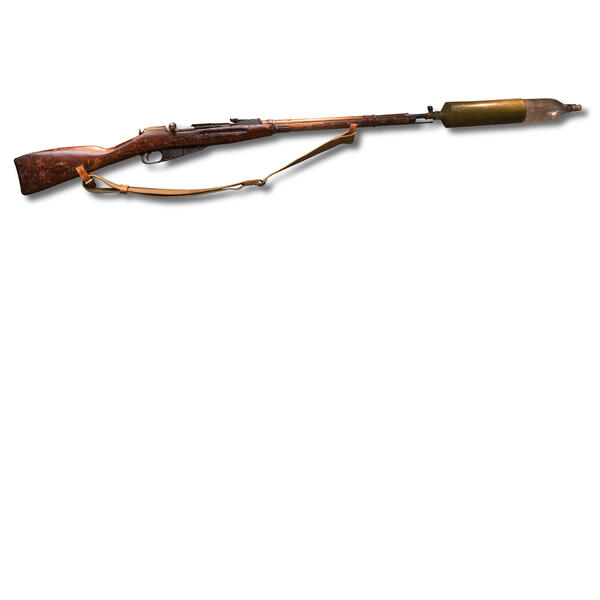The exhibition titled “The Feat of the Army” includes examples of the most important weapons of the Great Patriotic War. The bottle launcher is a unique invention. It was designed by the Doctor of Engineering Veniamin Aronovich Zuckerman. The unusual project almost cost the engineer his life.
Zuckerman was a professor and the author of research papers on the processes of explosion and detonation. He developed new technologies and worked at research institutions in Moscow and Kazan. In 1942, he invented a bottle launcher. At a critical moment during the tests, the projectile broke down. Zuckerman tried to reload the rifle, and the bottle caught on fire. His clothes blazed up immediately. Soldiers who were around helped save his life, but the professor suffered bad burns, and it took a long time for him to recover. Despite the injuries he had received, Zuckerman continued participating in the weapon’s tests.
The concept of a bottle launcher was based on the Molotov cocktail. Without the launcher, a soldier had to get close to the enemy, in order to throw a bottle with an incendiary mixture. This was inconvenient and even dangerous: sometimes, the thrower would also suffer burns. The bottle launcher made it possible to fire bottles at the enemy’s tanks at a large distance. In spite of the simple design, the weapon was capable of launching at least six bottles per minute.
The new device was easy to use. The bottle launcher was fixed on a rifle and filled with an incendiary mixture. Usually, one soldier was responsible for aiming, and another loaded the projectiles. At first, ordinary glass bottles were used. Later, they were substituted by special devices shaped as mortar shells. These were produced at the “Pobeda Truda” (The Victory of Labor) glassworks. It was located in Kazan where Veniamin Zuckerman first designed his bottle launcher. The weapon was used until the fall of 1942 when it was taken out of production and replaced with anti-tank rifles and cannons.
The museum also houses a Mosin’s rifle. It has a simple and reliable design. The rifle was mostly used by the partisans. Later, a modified version with an optical sight was designed for snipers.
Zuckerman was a professor and the author of research papers on the processes of explosion and detonation. He developed new technologies and worked at research institutions in Moscow and Kazan. In 1942, he invented a bottle launcher. At a critical moment during the tests, the projectile broke down. Zuckerman tried to reload the rifle, and the bottle caught on fire. His clothes blazed up immediately. Soldiers who were around helped save his life, but the professor suffered bad burns, and it took a long time for him to recover. Despite the injuries he had received, Zuckerman continued participating in the weapon’s tests.
The concept of a bottle launcher was based on the Molotov cocktail. Without the launcher, a soldier had to get close to the enemy, in order to throw a bottle with an incendiary mixture. This was inconvenient and even dangerous: sometimes, the thrower would also suffer burns. The bottle launcher made it possible to fire bottles at the enemy’s tanks at a large distance. In spite of the simple design, the weapon was capable of launching at least six bottles per minute.
The new device was easy to use. The bottle launcher was fixed on a rifle and filled with an incendiary mixture. Usually, one soldier was responsible for aiming, and another loaded the projectiles. At first, ordinary glass bottles were used. Later, they were substituted by special devices shaped as mortar shells. These were produced at the “Pobeda Truda” (The Victory of Labor) glassworks. It was located in Kazan where Veniamin Zuckerman first designed his bottle launcher. The weapon was used until the fall of 1942 when it was taken out of production and replaced with anti-tank rifles and cannons.
The museum also houses a Mosin’s rifle. It has a simple and reliable design. The rifle was mostly used by the partisans. Later, a modified version with an optical sight was designed for snipers.



